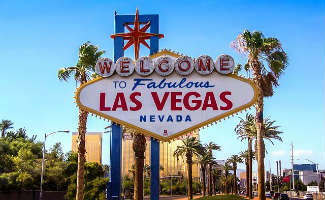A Magic Show Turns Dangerous
On November 12, 2013, a British tourist in Las Vegas got the chance of a lifetime to be a part of an illusion by world famous magician David Copperfield. The trick is the iconic final illusion of Copperfield’s long-running Las Vegas show where random audience members disappear from the stage and wind up at the back of the auditorium. On this particular evening something went wrong, and now the slip and fall injury that occurred that evening has now become a personal injury court proceeding.
The Cost Of Entertainment
The plaintiff claims that, up to April 2018, he had spent around $400,000 to cover medical expenses as a result of the fall. It has not been indicated whether or not the plaintiff is seeking more than just medical expenses, but it is logical to surmise that the costs associated with having to travel from England to Las Vegas for the trial will be part of the final tally. According to personal injury law, Copperfield and the MGM Grand where the show is performed could be forced to pay those penalties.
But there is a much steeper cost that Copperfield will have to endure from this trail as the secret to his most famous trick has been revealed in court. With the illusion broken, Copperfield will have to come up with a new way to end his very popular Las Vegas show.
Slip Or Trip?
The plaintiff indicates that the group of audience members he was a part of was taken down unfamiliar and dark tunnels, outside into the open air, and then run up an incline that was covered in construction dust. It was the subtle incline and dust that the plaintiff says caused him to slip and fall. But the defense team for David Copperfield tells a much different story.
According to the defense team, the plaintiff tripped and fell over his own feet while making the last dash for the door that leads back into the casino. While this debate was going on, every nuance of the trick was revealed to the public. It is unknown whether or not Copperfield can sue either the court or the plaintiff for the damage done to his career by revealing the trick.
When the defense team tries to clarify the situation by insisting that the plaintiff tripped instead of slipped, there is little precedent to show that the distinction helps the defendant. If you do a quick online search for trip and fall accidents, you will find that the majority of the results take you to slip and fall pages.
While a trip and fall accident can sometimes be grouped in with slip and fall, that is not always the case. A plaintiff who tripped over their own two feet while walking on an otherwise perfectly safe surface would have little case against a defendant. But does that distinction work in this case?
The plaintiff is maintaining that they slipped on the construction dust due to the unexpected incline the group came across when running towards the casino door. Since there was a foreign material on the walking surface that could cause a slip and fall, the assertion that it was a trip and fall accident does not help at all.
Are Copperfield And The MGM Liable
When someone is invited onto a property, the owner of the property has an implied responsibility to make sure all conditions are safe. To execute the trick, Copperfield requires the group of audience members to go into parts of the casino that are normally off-limits to the public. But since these audience members are invited into this situation, Copperfield and the MGM Grand are liable for their safety.
Since there is implied responsibility, it is logical to expect the MGM Grand or it’s insurance company to put in safety measures to protect the audience members. Since the areas the audience members are taken through are normally off-limits, it is reasonable to expect that not one person in the group had ever walked or ran that path before. The plaintiff indicates that portions of the path are dark, and it ends with a run up an unexpected incline. This type of situation opens itself up to a slip and fall lawsuit, and it is surprising that this type of personal injury event had not happened before.
What Could Have Been Done To Prevent The Accident?
Based on the testimony of the plaintiff, there are several steps that could have been taken to prevent an accident from happening.
- The entire path the audience members followed should have been well lit.
- The guide taking the audience members from the stage to the secret casino door should have done a better job at warning the audience members about potential changes in the path, such as unexpected inclines.
- Asking people to run on flat surfaces who are not wearing running shoes or prepared to run is asking for trouble.
- Dust on a flat surface can be very slippery to someone on vacation wearing smooth-soled shoes.
- The pathway should have been kept clear of all obstacles and foreign materials before the audience members were selected and brought to the stage.
Who Is Responsible?
As of April 2018, the court case is still ongoing. But given what we know, we can speculate who is responsible for what happened. Considering the long list of actions that the MGM and Copperfield did wrong, it can be assumed that the two parties are responsible for the plaintiff’s injuries. With the way the path the group followed was laid out by the plaintiff, it is sheer luck that prevented a slip and fall accident from happening years earlier.
It is acceptable to assume that David Copperfield chooses “random” audience members with a criteria in mind. We can speculate that healthy looking individuals who do not wear glasses would top the list of preferred candidates. But even someone who is perfectly healthy and has good eyesight can still slip and fall on a foreign material on a flat surface at a gradual incline. Almost everything about this trick seems to be done without any consideration for audience member safety, or for the prevention of slip and fall injuries.
When tourists go to Las Vegas shows, they never expect to be injured in any way. Even when an audience member is asked to be part of a magic trick, that audience member would expect the magician and the property to take the necessary precautions to secure everyone’s safety. Based on the plaintiff’s testimony in this case, it is obvious that neither David Copperfield or the MGM Grand took every step they could to ensure the safety of their audience members.
When a magician decides to truly select someone from the audience at random, they are taking a significant risk. That audience member has not been trained on how the trick works, and that opens up the potential for any type of personal injury incident. In this case, David Copperfield had been taking chances for years that finally caught up to him. Now it is up to an American civil court to decide if a British tourist’s slip and fall injuries were the result of negligence or all part of a magic trick gone wrong.
